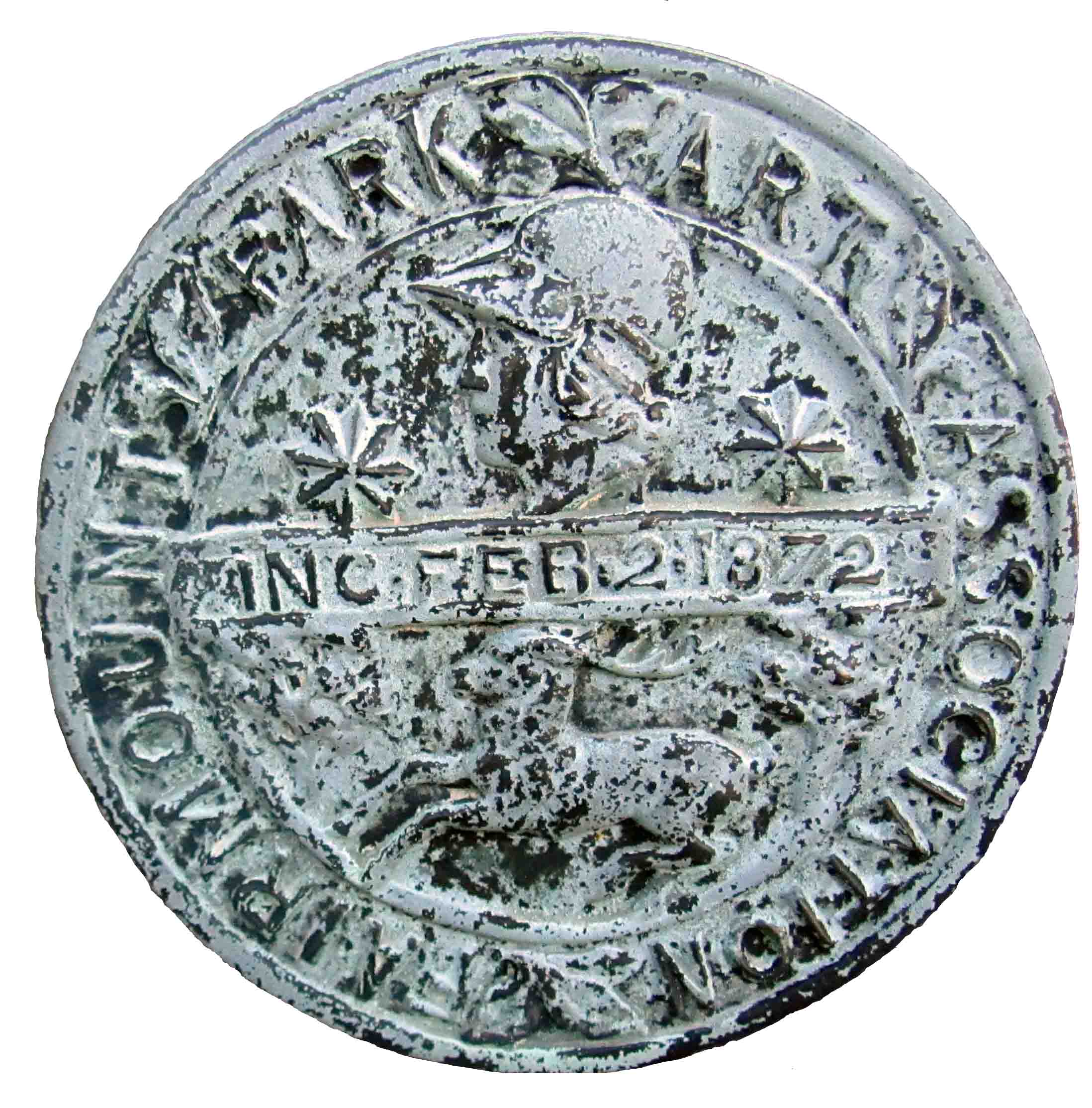The statue was placed in 1947, designed by Louis C. Borie and sculpted by Raoul Josset (1900-1957). A parade of Revolutionary War veterans statues line the sides of a huge courtyard found to the rear of the west side of the Philadelphia Museum of Art.  There are three to the right and the same amount to the left. If your back is to the Museum, this statue is the last statue on the left. Simply walk down the the stairs and walk to the end on the left. The Fairmount Water Works will also be to the left. You have to check that out as well.
There are three to the right and the same amount to the left. If your back is to the Museum, this statue is the last statue on the left. Simply walk down the the stairs and walk to the end on the left. The Fairmount Water Works will also be to the left. You have to check that out as well.
All the statues are made of bronze and look similar, both in composition, form, size and subject matter. This statue dimensions are approximately: Sculpture: approx. 125 x 69 x 43 in.; Base: approx. 90 x 107 x 107 in. and is of polished granite base with of course the bronze sculpture on top. The incised inscription on the front:
LAFAYETTE 1757-1834
NATIVE OF FRANCE DEVOTED
AND FAITHFUL TO THE CAUSE
OF AMERICAN INDEPENDENCE
GENERAL OF THE CONTINENTAL
ARMY AN INDISPENSABLE
ALLY OF FREEDOM
SIRIS describes the statue as a standing portrait of Lafayette with his feet spread apart and his proper right hand raised. His proper left hand holds a sword vertically in front of him. He is dressed in his military uniform consisting of a long double-breasted coat with fringed epaulets, a ruffled-neck shirt, boots, and a cape which flies open in the wind. The sculpture rests on a three-tiered square base.
In 1777, Marquis Gilbert de Lafayette (1787-1834) defied French King Louis XVI and sailed his ship, La Victoire, to America to join the Americans in their fight for independence. He was appointed a Major General and became George Washington's aide-de-camp and took part in the Battle of Brandywine, the winter at Valley Forge, and the Rhode Island campaign. In 1778, he went back to France where he successfully persuaded the French to assist American forces. Comte de Rochambeau was appointed commander of the French forces, Comtes d'Estaing and de Grasse were appointed leaders of naval forces. At Yorktown, Virginia, Rochambeau and Washington led troops from the north while Comtes de Barras and Grasse took command of the coast, and Lafayette cornered the British so that they could not escape. The British forces under Cornwallis were forced to surrender. Following the war, Lafayette returned to France, but came back to America twice in later years and each time was enthusiastically received. Because he had spent over $200,000 of his own money during the Revolution, Congress granted him $200,000 and a township of land in Louisiana and Florida, though not citizenship.
This piece was erected through the bequest of General William F. Reilly. The Reilly Trust was initially administered by First People's Bank, but as of the 1993 SOS! survey, Core States Bank was handling the Reilly Trust. This sculpture is one of several which comprises the William M. Reilly Memorial on the west side of the museum. The memorial honors Revolutionary War heroes. The SOS! survey cover sheet notes that current conservation of the piece is the responsibility of the Reilly Trust. C. Louis Borie designed the base.
This area is one of the premier tourist attractions for Philadelphia and referenced several times in their official tourist site. Here is what they have to say:
In 1890 General William M. Reilly of the Pennsylvania National Guard bequeathed funds for a memorial to Revolutionary War heroes. Though it took decades to raise additional money, six sculptures were eventually installed northwest of the Art Museum.
Immortalized in bronze, the Marquis de Lafayette gestures flamboyantly as his cape billows around him. Another European volunteer, Major General Friedrich von Steuben, points steadfastly ahead. General Richard Montgomery, who died in the assault on Quebec, stands pensively with hat in hand. Maritime hero John Paul Jones is shown with his telescope, while General Casimir Pulaski poses fiercely with sword at the ready. Unusual for this group, the sculpture of General Nathanael Greene emphasizes nonmilitary aspects of the man’s character.
Marquis de Lafayette (c. 1947) by Raoul Josset Major
General Friedrich von Steuben (c. 1947) by Warren Wheelock
General Richard Montgomery (c. 1946) by J. Wallace Kelly
John Paul Jones (c. 1957) by Walker Hancock
General Casimir Pulaski (c. 1947) by Sidney Waugh
General Nathanael Greene (c. 1960) by Lewis Iselin Jr.
SOURCE